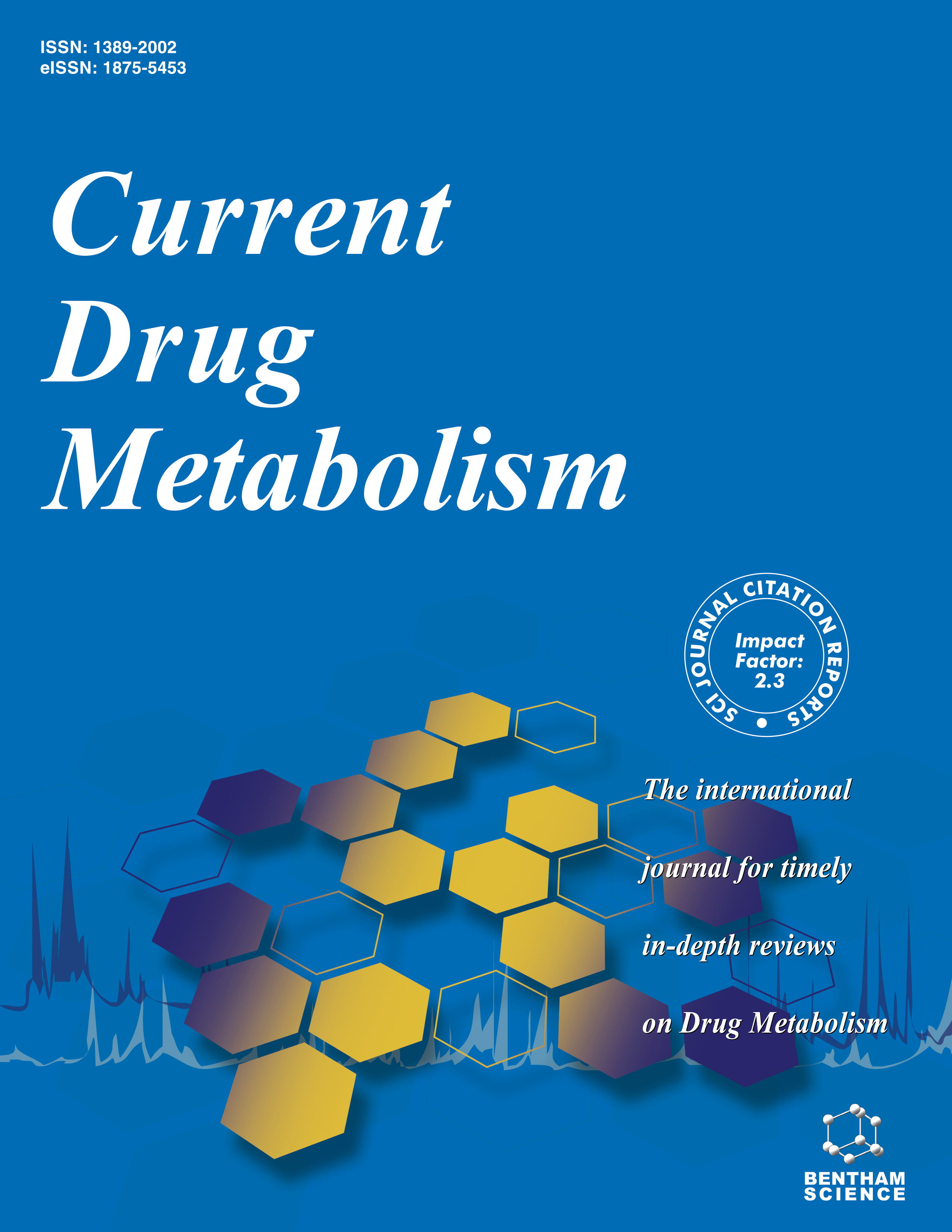- Home
- A-Z Publications
- Current Drug Metabolism
- Previous Issues
- Volume 23, Issue 5, 2022
Current Drug Metabolism - Volume 23, Issue 5, 2022
Volume 23, Issue 5, 2022
-
-
Dermatokinetics: Advances and Experimental Models, Focus on Skin Metabolism
More LessAuthors: Paul Quantin, Mathilde Stricher, Sophie Catoire, Hervé Ficheux and Christophe EglesNumerous dermal contact products, such as drugs or cosmetics, are applied on the skin, the first protective barrier to their entrance into the organism. These products contain various xenobiotic molecules that can penetrate the viable epidermis. Many studies have shown that keratinocyte metabolism could affect their behavior by biotransformation. While aiming for detoxification, toxic metabolites can be prod Read More
-
-
-
Cytochromes P450: Role in Carcinogenesis and Relevance to Cancers
More LessAuthors: A'edah Abu-Bakar, Boon H. Tan, Hasseri Halim, Salfarina Ramli, Yan Pan and Chin Eng OngCancer is a leading cause of mortality globally. Cytochrome P450 (CYP) enzymes play a pivotal role in the biotransformation of both endogenous and exogenous compounds. Various lines of evidence from epidemiological, animal, and clinical studies point to the instrumental role of CYPs in cancer initiation, metastasis, and prevention. Substantial research has found that CYPs are involved in activating different carcinogenic c Read More
-
-
-
Impact of Drug Metabolism/Pharmacokinetics and its Relevance Considering Traditional Medicine-based Anti-COVID-19 Drug Research
More LessAuthors: Da-Cheng Hao, Fan Wang and Pei-Gen XiaoBackground: The representative anti-COVID-19 herbs, i.e., Poriacocos, Pogostemon, Prunus, and Glycyrrhiza plants, are commonly used in the prevention and treatment of COVID-19, a pandemic caused by SARSCoV- 2. Diverse medicinal compounds with favorable anti-COVID-19 activities are abundant in these plants, and their unique pharmacological/pharmacokinetic properties have been revealed. However, the current t Read More
-
-
-
Establishment of a High Content Image Platform to Measure NF-ΚB Nuclear Translocation in LPS-induced RAW264.7 Macrophages for Screening Anti-inflammatory Drug Candidates
More LessAuthors: Yan-Yu Zhang, Yun-Da Yao, Qi-Qing Cheng, Yu-Feng Huang and Hua ZhouBackground: High Content Image (HCI), an automatic imaging and analysis system, provides a fast drug screening method by detecting the subcellular distribution of protein in intact cells. Objective: This study established the first standardized HCI platform for lipopolysaccharide (LPS)-induced RAW264.7 macrophages to screen anti-inflammatory compounds by measuring nuclear factor-ΚB (NF-ΚB) nuclear translocation Read More
-
-
-
Urine Metabolites as a Predictor of Warfarin Response Based on INR in Atrial Fibrillation
More LessBackground: Warfarin is an anticoagulant with wide inter-individual variations in drug responses monitored based on the International Normalized Ratio (INR). It is commonly prescribed for Atrial Fibrillation (AF) and stroke. Oral anticoagulants (e.g., warfarin) reduce the risk of getting a stroke but increase the risk of hemorrhage. The proton Nuclear Magnetic Resonance (1H-NMR) pharmacometabonomics technique is useful fo Read More
-
-
-
Interactions Between Meropenem and Renal Drug Transporters
More LessAuthors: Jing Dong, Yanhui Liu, Longxuan Li, Yunhe Ding, Jun Qian and Zheng JiaoBackground: Meropenem is a carbapenem antibiotic and is commonly used with other antibiotics for the treatment of bacterial infections. It is primarily eliminated renally by glomerular filtration and renal tubular secretion. Objective: This study aimed to evaluate the roles of renal uptake and efflux transporters in the excretion of meropenem and potential drug interactions mediated by renal drug transporters. Methods: U Read More
-
Volumes & issues
-
Volume 25 (2024)
-
Volume 24 (2023)
-
Volume 23 (2022)
-
Volume 22 (2021)
-
Volume 21 (2020)
-
Volume 20 (2019)
-
Volume 19 (2018)
-
Volume 18 (2017)
-
Volume 17 (2016)
-
Volume 16 (2015)
-
Volume 15 (2014)
-
Volume 14 (2013)
-
Volume 13 (2012)
-
Volume 12 (2011)
-
Volume 11 (2010)
-
Volume 10 (2009)
-
Volume 9 (2008)
-
Volume 8 (2007)
-
Volume 7 (2006)
-
Volume 6 (2005)
-
Volume 5 (2004)
-
Volume 4 (2003)
-
Volume 3 (2002)
-
Volume 2 (2001)
-
Volume 1 (2000)
Most Read This Month
Article
content/journals/cdm
Journal
10
5
false
en


